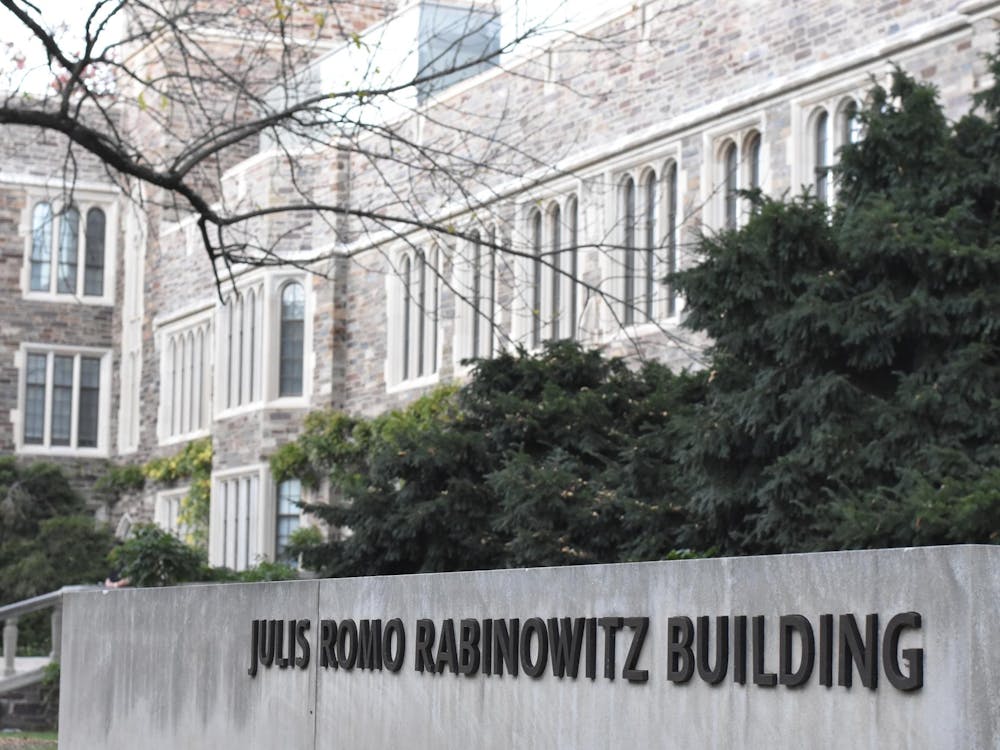Princeton has an overwhelming number of lectures, dinners and roundtable discussions. The opportunities to attend these events are endless. We have all gotten the e-mail with the all-caps subject line screaming about so-and-so coming for this special event. But when you get multiple e-mails a day (sometimes an hour on Mondays), you delete them all out of sheer frustration and return to the vital messages in your inbox which had been clogged up by all these announcements.
With students brimming with the intellectual curiosity that got them into Princeton, it would seem logical that the intellectually stimulating events the University offers would be well-attended by the students themselves. But as one grad student put it while looking out at the audience of one of the more popular lectures, “There’s a lotta grey hair.”
So if the lectures, discussions and seminars are for student benefit, why is this happening? The University obviously spends a lot of money to bring in some of these big names, some of whom do end up having well-attended lectures that fill the larger auditoriums on campus. But some very prominent individuals in their fields who happen to be from smaller departments are subject to empty-chair syndrome on a consistent basis.
Advertising is definitely a major problem for almost every event. The well-known names are going to have a lot of people attend their lectures. But the rest of the innumerable people who speak at the University often aren’t so lucky. There is no one source that posts all possible events, and therein lies the problem. Because the University, the department, the residential college and the various clubs and organizations host their own events, most people end up hearing only about a few that are posted on Point or announced in e-mails from professors, residential colleges or the handful of organizations they’re members of. I can’t count the number of times I’ve growled in frustration on learning after the event that someone amazing was lecturing on a subject I was interested in, simply because I wasn’t on a particular listserv.
So other than the difficulties of advertising, why aren’t students taking advantage of the amazing opportunities in lectures and discussions? It’s not because they aren’t as intellectually curious as Princeton literature and President Tilghman proclaim. Ironically, the very same reasons they were admitted to Princeton often stop them from attending these events. To get into Princeton, you have to display an impressive breadth and depth in your list of extracurricular activities. Unsurprisingly, the same-overcommitedness that got them into the University certainly doesn’t desert them once they enroll here. Besides taking rigorous course loads, many students participate in varsity sports, a cappella groups, dance groups and orchestra, along with five or six other organizations they are affiliated with in their spare time.
This is one of the main factors that has contributed to the empty-chair syndrome. Because students are involved in so many different activities and organizations outside of classes, major scheduling conflicts ensue when events are planned during the time when students are involved in their respective extracurricular activities. An athlete with afternoon practice can’t take off from practice to attend a 4:30 p.m. lecture or make a 5:30 p.m. roundtable dinner discussion. This scenario is repeated innumerable times for students involved with most other activities on campus.
There is no easy remedy to the complicated circumstances contributing to the empty-chair syndrome. Perhaps it is time for the University and the USG to work more closely together on providing a more all-encompassing resource for listing these events. Maybe it’s just a simple matter of scheduling events in more accessible timeslots for students. Either way, unless something is done, the empty-chair syndrome will continue to plague Princeton.
I would like to thank Adrian Gallegos ’11 for providing the initial idea for this column and my classmates in JRN 452: Journalism on the Screen: The Digital Journalist for contributing the majority of the content. Without them, I would never have been able to write this column.
Kelsey Zimmerman is a freshman from Glen Allen, Va. She can be reached at kzimmerm@princeton.edu.








